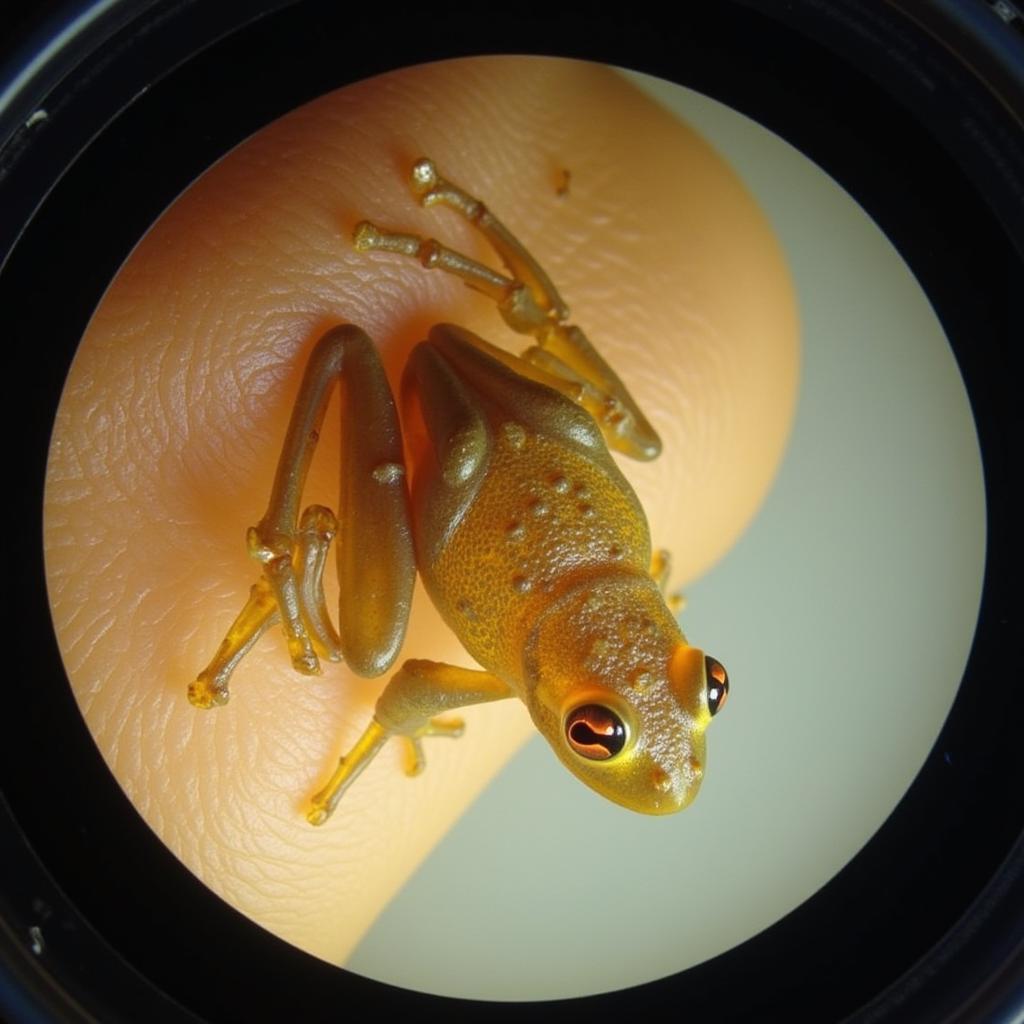African Clawed Frog Diseases: A Comprehensive Guide
African Clawed Frog Diseases can range from common bacterial infections to more serious parasitic infestations. Understanding these ailments is crucial for anyone keeping these fascinating creatures as pets or using them in research. This guide explores the various health issues that can affect African clawed frogs, offering insights into diagnosis, treatment, and prevention.
Common Bacterial Infections in African Clawed Frogs
Bacterial infections are a prevalent concern among African clawed frogs. These infections can manifest in various ways, including reddening of the skin, lethargy, loss of appetite, and swelling. One of the most common culprits is Aeromonas hydrophila, a bacterium found in aquatic environments. It’s important to maintain excellent water quality to prevent these infections. Regular water changes and proper filtration are essential.
If you suspect your frog has a bacterial infection, consult a veterinarian experienced with amphibians. They can diagnose the specific bacteria involved and prescribe the appropriate antibiotic treatment. Early intervention is key to a successful recovery.
One common sign of illness is a change in eating habits. For more information on this topic, see our article on african clawed frog not eating.
Parasitic Infections: A Serious Threat
Parasitic infections can pose a significant threat to African clawed frogs. Parasites can range from microscopic protozoa to larger worms. Symptoms of parasitic infections can include lethargy, weight loss, and abnormal fecal matter. One common parasite is Chilodonella, which can cause skin irritation and respiratory problems.
Diagnosis of parasitic infections often requires microscopic examination of skin scrapings or fecal samples. Treatment typically involves specific anti-parasitic medications. Prevention involves maintaining a clean environment and quarantining new frogs before introducing them to an established tank.
 Microscopic View of Chilodonella Parasite on African Clawed Frog Skin
Microscopic View of Chilodonella Parasite on African Clawed Frog Skin
Red Leg Syndrome: A Common Ailment
Red leg syndrome is a common and potentially fatal bacterial infection characterized by reddening of the ventral skin, especially on the legs and belly. It’s often a secondary infection, meaning it develops due to underlying health issues or poor water conditions. Stress, improper diet, and overcrowding can all contribute to red leg syndrome.
Treating red leg syndrome requires addressing the underlying cause, improving water quality, and administering antibiotics. It is important to isolate the infected frog to prevent the spread of infection to other tank mates.
Fungal Infections in African Clawed Frogs
Fungal infections can also affect African clawed frogs, often appearing as white or fuzzy patches on the skin. Poor water quality and weakened immune systems can make frogs susceptible to fungal growth. Treatment typically involves antifungal medications, either topical or added to the water.
What are the common causes of fungal infections? Poor water quality and a weakened immune system are the leading contributors.
Dr. Amina Bakari, a veterinarian specializing in aquatic animals, notes, “Preventing disease in African clawed frogs requires a proactive approach. Maintaining optimal water quality and providing a nutritious diet are essential for their overall health and well-being.”
Preventing African Clawed Frog Diseases: Proactive Measures
Preventing diseases is always better than treating them. Maintaining a clean, stress-free environment is crucial for the health of your African clawed frogs. This includes regular water changes, proper filtration, and providing a balanced diet. Learn more about the typical african clawed frog lifespan. Understanding their lifespan can help you provide the best care throughout their lives.
“Regular observation of your frogs is vital,” says Dr. John Mbwana, an aquatic biologist. “Early detection of any unusual behavior or physical changes can help prevent minor issues from developing into serious health problems.” You can also check our african clawed frog compatibility chart to make sure you are housing compatible species. This can help reduce stress and the likelihood of disease.
The African clawed frog is a valuable african clawed frog model organisms in scientific research. Understanding their health needs is important for both pet owners and researchers. Proper care, including maintaining optimal water temperature, is crucial. For more information, see our guide on african dwarf frog water temp.
Conclusion
African clawed frog diseases are a serious concern, but with proper care and attention, many health problems can be prevented or treated effectively. Maintaining a clean and stress-free environment, providing a balanced diet, and observing your frogs regularly are key to their long-term health and well-being. Early detection and intervention are crucial for successful treatment of African clawed frog diseases.
FAQ
-
What are the signs of a sick African clawed frog? Lethargy, loss of appetite, skin discoloration, and swelling are common signs.
-
How often should I change the water in my frog’s tank? Partial water changes should be done weekly, and full water changes monthly.
-
What should I feed my African clawed frog? A varied diet of commercial frog food, insects, and worms is recommended.
-
Can I treat my frog’s illness myself? It is always best to consult a veterinarian for diagnosis and treatment.
-
How can I prevent diseases in my African clawed frogs? Maintaining excellent water quality and providing a proper diet are crucial for prevention.
-
What is the ideal water temperature for African clawed frogs? The ideal temperature range is between 68 and 78 degrees Fahrenheit (20-26 degrees Celsius).
-
What should I do if I suspect my frog has red leg syndrome? Isolate the frog and consult a veterinarian immediately.
You might also be interested in our articles on other amphibian care topics.
Need help with your African clawed frog? Contact us! Phone: +255768904061, Email: kaka.mag@gmail.com Or visit us at: Mbarali DC Mawindi, Kangaga, Tanzania. We have a 24/7 customer support team.


